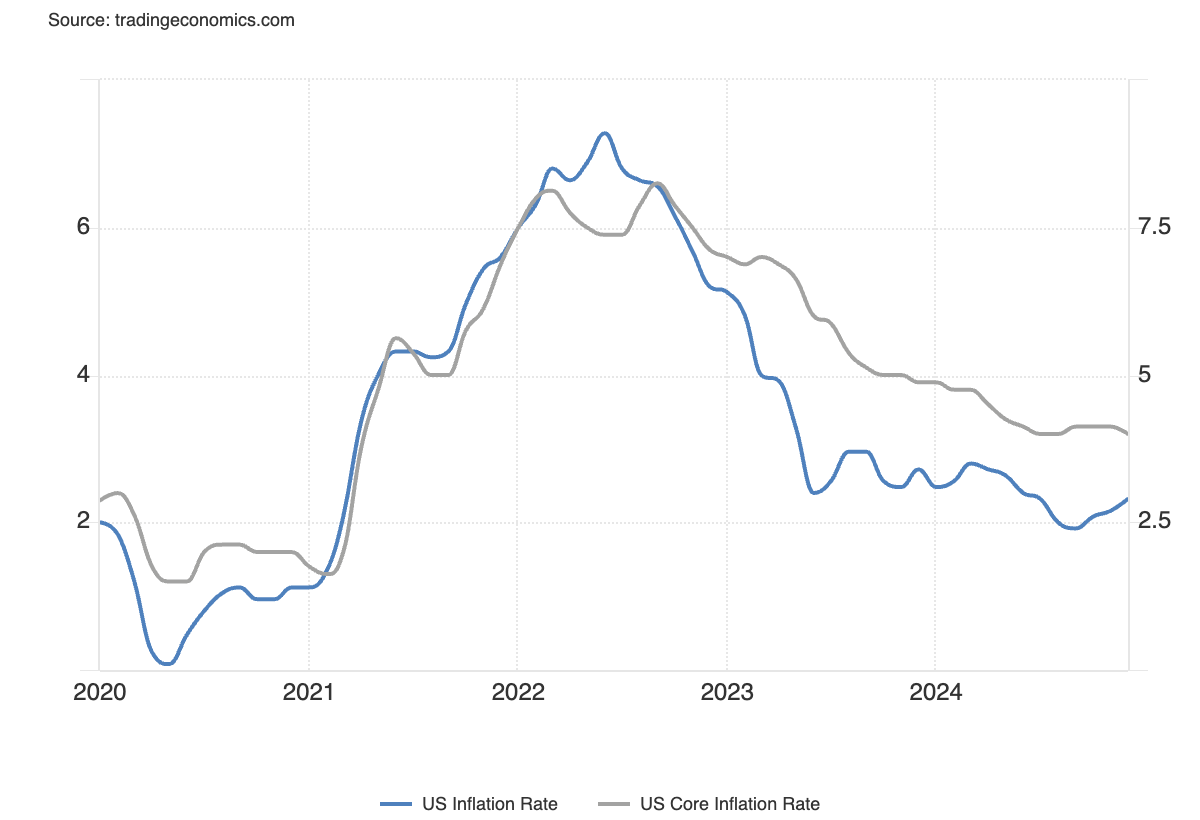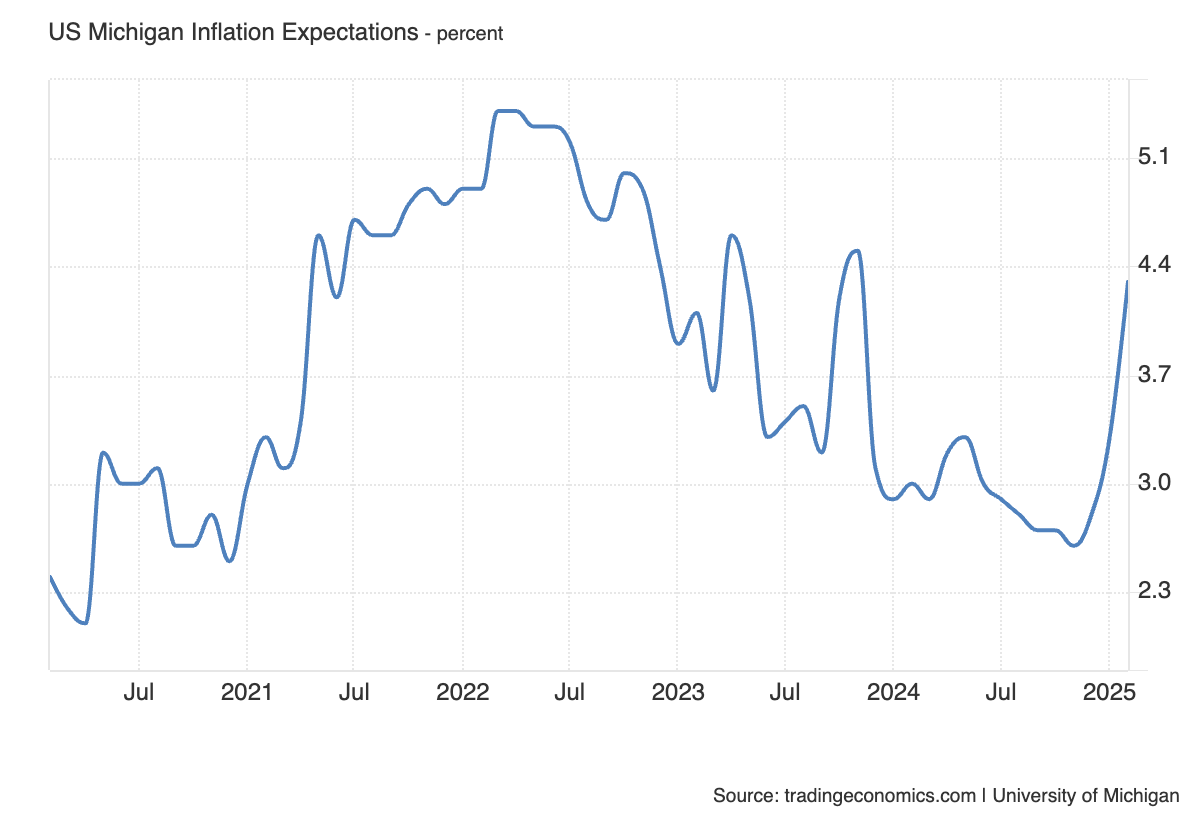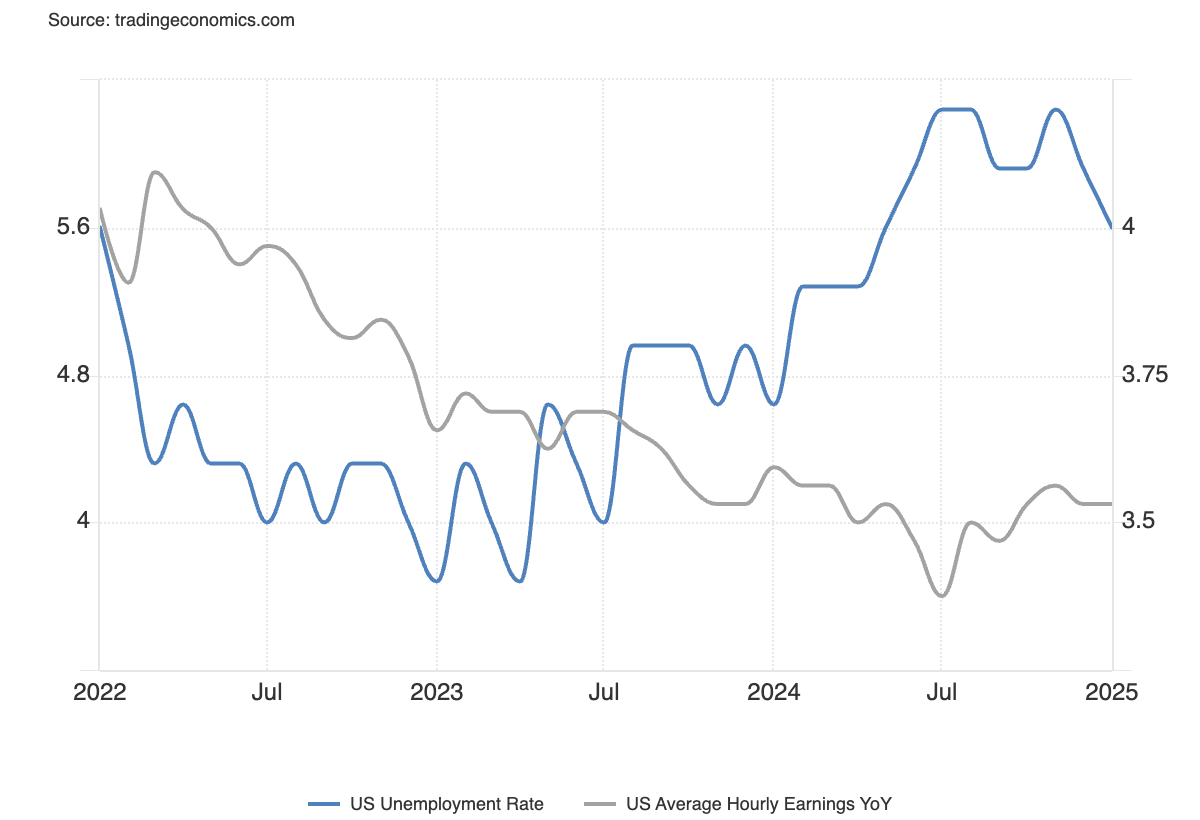US CPI data in focus as inflation expectations and wage growth rises
The US labor market remains resilient despite a smaller-than-expected payrolls increase, with unemployment falling and wages rising. Inflation expectations have surged, prompting a reassessment of the Federal Reserve’s rate-cut timeline.
The January US Non-Farm Payrolls data pointed to a resilient labour market despite a smaller than expected increase in employment for the month. The monthly payrolls change was 143,000, below the 169,000 consensus estimate. However, the unemployment rate fell to 4.0%, average hourly earnings unexpectedly rose to 4.1%, and December’s employment increase was revised significantly higher, signalling ongoing tightness in the US jobs market. Also indicating resilience was the annual revision to the payrolls figures, with the preliminary downward revision in August being significantly reduced.

(Source: Trading Economics)
While the data painted a robust picture of the US economy, it also hinted at ongoing stickiness in inflation. The fear of stubborn or even re-anchored inflation was exacerbated by the University of Michigan consumer sentiment survey’s inflation expectations read, which revealed a sizable jump. Consumer price expectations rose to 4.3% from 3.3% a month earlier, driven primarily by fears that higher tariffs will push prices higher.

(Source: Trading Economics)
The data forced a rethink of the timing of the US Federal Reserve’s next move in interest rates. Although the markets are still pricing in further cuts from the Fed, the meeting at which a cut is fully priced-in moved from July to September. The dynamic contributed to upward pressure on US yields and the US Dollar and downward pressure on equity prices, a move which was compounded by threats of further tariffs from US President Donald Trump.
The markets now shift attention to the latest CPI figures for a gauge on inflationary pressures in the US. Economists forecast headline CPI remained steady last month at 2.9% but core CPI moderated slightly to 3.1%. Should core inflation not drop as expected, it may see markets continue to extend the timeline of the US Fed’s policy pause; an unexpected drop would ease fears that the inflation tailwinds from the Trump administration are hitting an economy already confronting stubborn price growth.

(Source: Trading Economics)